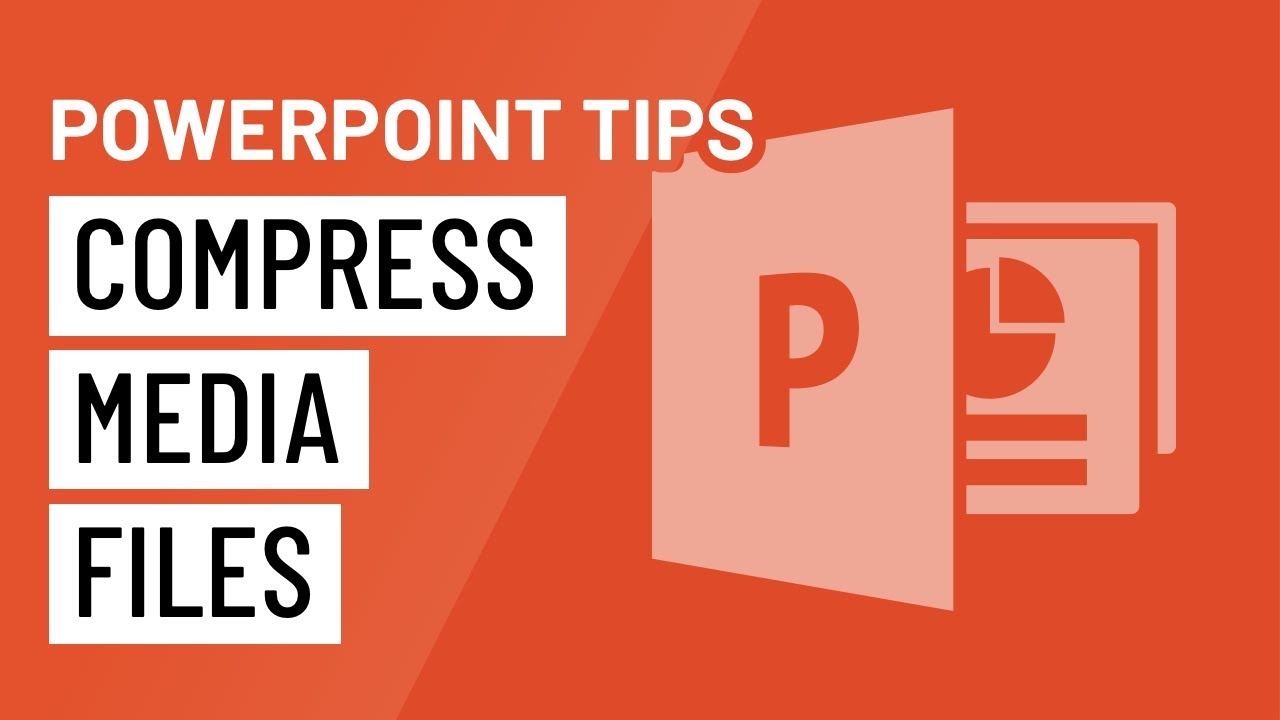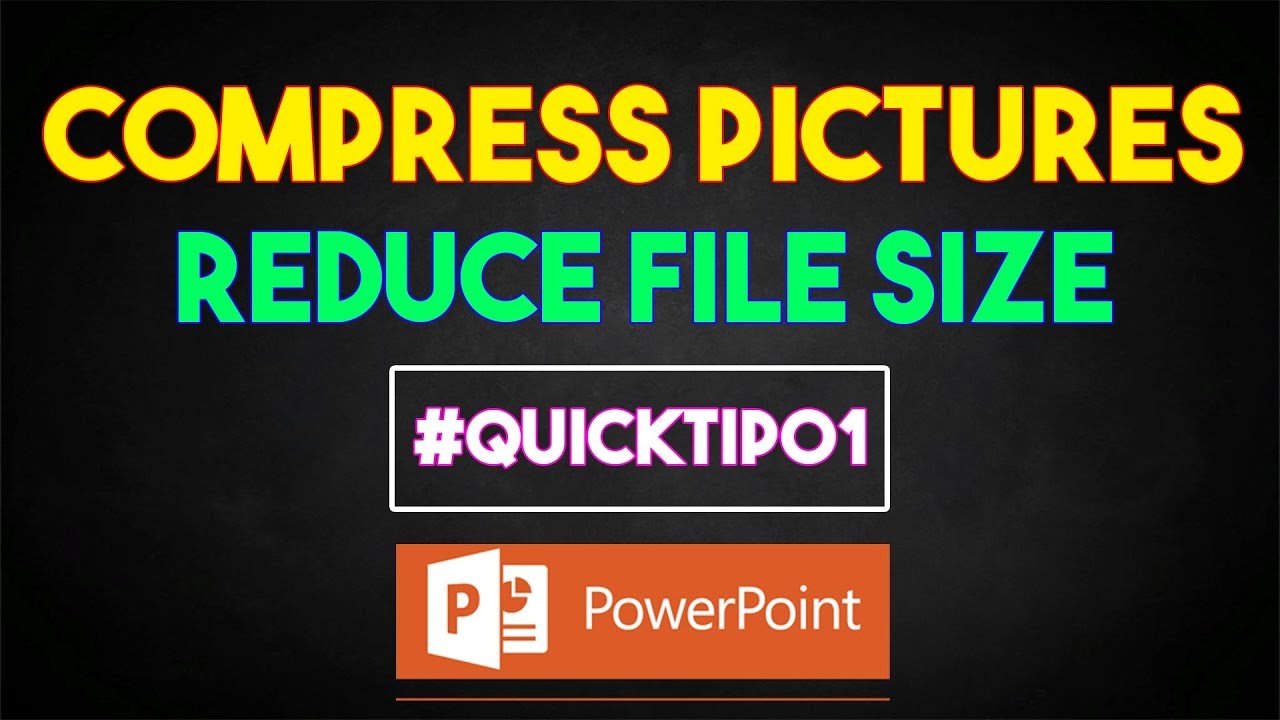Taking into account that Microsoft PowerPoint presentations are usually accompanied by tons of images, gifs, embedded videos, pictures, graphics and other content. Not surprisingly, you get some fairly large files. Here are some steps you can take to reduce the file size of a presentation.
Large files can be annoying. They occupy a lot of valuable disc space, slow down the playback performance and can cause emails not to be sent because they exceed the file size limit. You can avoid all these things by reducing the file size of your presentation.
The first thing you would think of when considering file size reduction are the images, and for good reason. Image files can be quite large. There are steps you can take to reduce the size, such as compressing the images in the presentation.
If you suspect that the reason why your PowerPoint file is so large is due to the images, then we have for you some additional tips to add if you have done your best but still need to reduce the size of your presentation file.
Convert your presentation to PPTX format

Microsoft launched the PPTX format in Office 2007. Even so, it is not uncommon to see PPT files floating around. So what is the difference between a PPT and PPTX file? The PPTX version compresses all content within the presentation. If you have a PPT file and convert it into a PPTX file, you will notice a decrease in the file size.
- Converting the file is as simple as pressing a button and choosing the type of file. Go ahead and open your PPT file, go to the «File» tab and then click on «Convert».
- Windows File Explorer will appear. You will notice that the type “Save As” is set to “PowerPoint Presentation”. This is the type of PPTX file. Click Save. »
- Your PPT file will now be converted to a PPTX file. As you can see, the file size has been reduced.
- HTG Presentation 2 is our PPT file, and HTG Presentation 3 is our PPTX file. The mere conversion of the file type reduced the size by 335 KB.
While this is not an impressive drop in file size, it has been possible to reduce the file size of a Word document from 6,001 KB to 721 KB. It all depends on what is inside the file. Hopefully, this will be the only step you should take. If not, read on.
Insert your images directly into PowerPoint: don’t copy and paste
It’s tempting to copy and paste an image into PowerPoint instead of using the insert function. This will not be a problem if you are not worried about the file size, but if you are, be careful with copying and pasting, you can reformat your image to BMP or PNG. Why is this a problem? Both file formats are larger than JPG.
You can see a comparison in which the PNG file has 153 KB compared to the 120 KB JPG file of the same image. Every time you copy and paste a JPG file into PowerPoint and convert to PNG, add some unnecessary file size to the presentation. Using the insert function will ensure that your images are inserted as intended.
You must make image edits in an image editor, not in PowerPoint

When you insert an image into PowerPoint, it is better to make sure you do not need any editing. If it does not require modifications, it is better to do it in an image editor. Why? When you use PowerPoint to edit your image, store all those edits as part of the presentation.
For example, when you change an image to black and white, PowerPoint also preserves the image in full color. That is a lot of additional cuts that are stored.
If you do not have an image editor or simply use PowerPoint, be sure to tell PowerPoint to discard all saved data from the editions. It will not save you as much space as working in a dedicated editor, but it will help.
Compress all the images in your PowerPoint presentation
You can compress images in PowerPoint one at a time or all at once. If you are looking to do the latter, here we show you how.
- First, open your presentation, go to the “File” tab and then select “Save As” in the left panel. Next, select “More options”, which you will find below the area where you would name your file and choose the type of file.
- The “Save As” window will appear, this time with some additional options available to you. Next to the “Save” button, click on “Tools.” Now, in the drop-down menu that appears, select «Compress images».
- The “Compress images” window will appear. Here, you can choose the type of resolution of the images (based on PPI) in the presentation. You will also notice that you cannot select the “Apply only to this image” option in the “Compression options” group. This is because, due to the way you access this tool, this option is not available.
Note: If you want to compress a single image, select it and then go to Image Tools Format and then Compress images.
Once you are satisfied with your selection, click “Accept.” Remember to make sure you save your presentation later.
Do not use embedded fonts in your PowerPoint presentation
We understand why you might want to embed sources: you may be making a thematic presentation of Star Wars and as a result, it is likely that anyone with whom you share the presentation does not have those special sources available.
Embedding the sources in your presentation could avoid future problems. But it has the cost of increasing the size of the files. In general, unless you’re sure you need to show a particular source. So we recommend you deactivate the incorporation of sources.
Now, go to the “File” tab and select “Options” at the bottom of the left panel. On the “Save” tab, clear the “Embed fonts in the file” checkbox and then click “OK.”
Place links to files instead of embedding them
Consider the difference in file size if you insert a full YouTube video into your presentation instead of linking it again. Inserting a complete video will significantly increase the size of your presentation.
Certainly, there are some valuable benefits to embedding a file instead of linking it; like when the recipient might not have access to the internet to play the video), but if the file size is a problem, just don’t do it.
Do not store a thumbnail for PowerPoint presentation
A long time ago, when Office allowed you to save thumbnails of your presentation so you could preview the file when you search in File Explorer. Windows has become more sophisticated, so it no longer requires the help of Office applications to do so. But, the option is still available.
- With the thumbnail option enabled, the file size was 2,669 KB. Without the option enabled, the file size was reduced to 2,662 KB, saving a total of 7 KB.
- This is a fairly small saving, but when you try it with a Word document, the difference was significant, showing 721 KB without the option enabled and 3,247 KB with the option enabled.
- While this is a big gap between applications and it is not exactly clear why the difference is so large. It is still an option worth exploring. To disable the function, open your presentation, go to the “File” tab and then select “Properties”; which is located on the right side, then choose «Advanced Properties».
- You will now be in the “Summary” tab of the “Properties” window. At the bottom of the window, uncheck the box next to “Save preview image” and then click “OK.”
Remove personal and hidden information from your presentation
Microsoft Office will store your personal information, such as the author’s name and the hidden properties within your presentation. Getting rid of this information can save you some space.
- Open your presentation, go to the “File” tab and select the “Verify problems” option. Then select “Inspect Document.” The “Document Inspector” window will appear. Make sure the “Document properties and personal information” box is checked and then click “Inspect.”
- In the next window, select “Delete all”. The information will be deleted now, which will save you a few KB of space.
Disable Auto Recovery
This is not necessarily recommended, and should only be used as a last resort. Auto Recovery is an essential tool in Office and if you’ve ever lost a document before saving it, then you understand exactly what we mean.
- Each time Office uses Auto Recovery, it adds a bit to the file size. To disable Auto Recovery, go to the “File” tab and select “Options”, which is located at the bottom of the left panel.
- In the «Save» tab of the «Options» window, uncheck the box next to «Save AutoRecover information every xx minutes».
- If you save and leave the presentation immediately, you will not notice a difference. However, over time, as you continue moving forward in the presentation, the Auto Recovery function will add KB to your file.
Copy everything in a new presentation
While creating your presentation, PowerPoint will save several things in the background to help you. We have mentioned how to disable many of these functions, delete data saved by PowerPoint, etc.
But there is always the possibility that something has been overlooked and PowerPoint has stored information that you do not need. Copying your content to a new presentation can be a good solution to the problem.
However, this can be a bit complicated since, with PowerPoint, you will have to copy and paste each slide and master slides. But once you do, the new presentation will not have any of the previous background saves.
Including Auto Recovery information or previous versions of the file. As a result, you should see a change in the file size. While we cannot tell you exactly how much this will reduce the size of your file since each presentation will be different, it is worth a try.
One possibility: decompress the presentation and compress it
As we mentioned earlier, a PPTX file is a compressed file. That’s why the size is much smaller than an old school PPT file.
- This means that you can open it with a tool like 7-Zip or WinRar. Extract all the files from your PPTX, add them to a compressed file and then rename the file to a PPTX file extension. However, some problems may occur.
- In tests with a Word document, the file size was successfully reduced from 721 KB to 72 KB. However, it corrupted the file in the process. In other tests with another 2,614 KB file, it did not corrupt it, but only reduced it to 2,594 KB; a total of only 20 KB.
- We are not sure what is at stake here, so if you want to try this, make sure you have a backup of your file before doing so.
These are all the tips we have to reduce the size of your PowerPoint presentation. We are always looking for new and interesting ways to reduce the size of the files. So if you have any advice, just let him know.